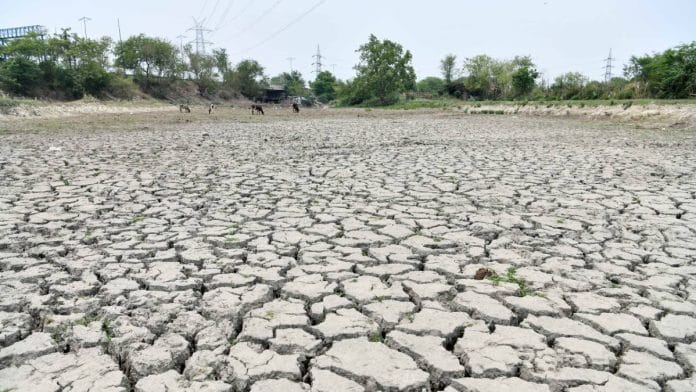New Delhi: Indians may have popularly referred to the abnormally high temperatures this summer as “heatwaves” but a report published last week by Moody’s, titled ‘India: Temperatures Beyond the Heatwave?’, documents that the mercury in reality exceeded the normal heatwave limit. The report suggests that mitigation of heat is the only viable solution.
It further points out that global temperatures are soaring to unprecedented levels as heatwaves are being declared in various countries.
“For the plains of India, a heat wave is declared if the maximum temperature of two weather stations reaches at least 45 degrees Celsius or more over two consecutive days; a severe heatwave is declared if the maximum temperature reach over 47 degrees Celsius,” says the report.
Temperatures have sustained such high levels for weeks now in several states in the summer months of April, May and June.
According to the India Meteorological Department (IMD), between 16 May and 18 June, the average maximum temperature for nearly 40 percent of India was more than 40 degrees Celsius, the report said.
“During May alone, more than 200 people had died and some 20,000 had been hospitalised with heat stroke in India. On 1 June, 33 election officials died of heatstroke in the state of Uttar Pradesh,” the report underlines.
In the last fortnight of May, Delhi’s power demand crossed 7,000 MW every single day, putting pressure not just on the power generation capacity of the city but also on the grid and transmission lines.
The extreme heat has also resulted in wet bulb temperatures exceeding safe levels.
The risk of death rises through wet bulb temperatures of 35 degrees Celsius, as the body’s system to dissipate heat through sweat no longer functions. Without the provision of rapid cooling relief, healthcare systems can become overwhelmed, the report states.
Also Read: Sizzling heat, humidity & high power demand lead to spike in AC blasts and how you can avoid them
Scorching temperatures — India not alone
Countries such as Pakistan, Mexico and Bangladesh have also seen temperatures cross 50 degrees Celsius, with daily average temperatures above 40 degrees Celsius.
Even the US, though having a lower average temperature, has experienced a phenomenon called “heat domes”, in which stalled areas of high pressure in the upper atmosphere push warm air towards the surface and trap the same.
“Since early June, temperatures have regularly peaked between 37.7 degrees Celsius and 43.3 degrees Celsius starting with the Western and Southwest states,” according to Moody’s report.
Moreover, such heat domes are likely to continue throughout July.
World average temperatures continue to rise. The report outlines how rising temperatures associated with climate change have also combined with a vast outburst of heat from the El Niño climate phenomenon. This has raised temperatures across the equatorial Pacific Ocean.
“Higher averages mean more, longer, and stronger heatwaves,” states the report.
‘Mitigation only solution to new normal’
Moody’s referred to a 2023 report by the Reserve Bank of India (RBI) that aimed to quantify the impact of heat stress on the economy.
“In the next 30 years, even moderate projections show the length of heatwaves increasing by a factor of five. The most severe projections indicate ‘heat-related deaths 25 times higher than 1990’ (CMCC 2021). Those longer heatwaves will destroy rice and grain crops, too ‘…costing farmers as much as 15 percent in lost income by 2050’,” Moody’s said.
The Moody’s report stresses on mitigation measures as a solution to the crisis.
Countries accustomed to heatwaves have already developed mitigation strategies, such as cooling centres and public awareness campaigns. However, extreme heat combined with high humidity leads to dangerous wet bulb temperatures, and poses severe risks to health and productivity, it points out.
“The young, elderly, and those with pre-existing conditions need protection in extreme wet bulb temperatures. Outdoor workers cannot work through the middle of the day and lose productivity,” states the report.
Temperature records frequently being broken has become the new normal. The prolonged and intense nature of heat conditions recently experienced in India can significantly disrupt various sectors such as agriculture, healthcare, distribution, education, and manufacturing, it warns.
“What was exceptional is now becoming commonplace. And still, the records will continue to be broken,” it adds.
(Edited by Nida Fatima Siddiqui)






